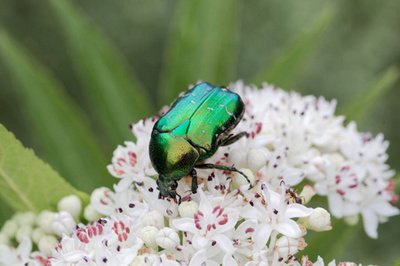”It is predicted that by 2025, more than 70% of farms will have adopted advanced Japanese beetle control technologies.”
In 2025 and beyond, control of the Japanese beetle will remain a critical challenge for modern agriculture, horticulture, and forestry in North America, Europe, and other regions. Known for its extremely aggressive feeding habits, the Japanese beetle (Popillia japonica) damages a wide range of plants, including fruit and ornamental trees, as well as lawns. These pests not only reduce crop yields but also disrupt the ecological balance, posing a serious threat to the livelihoods of farmers and forestry workers worldwide.
Beyond agriculture, the Japanese beetle infestation disrupts entire ecosystems, damaging landscapes, biodiversity, and forestry. Therefore, effective Japanese beetle control strategies remain a top priority in global pest management.
Early detection of damage caused by the Japanese beetle is the first step to successful pest control. Effective inspection and identification are crucial for minimizing crop losses and promptly applying pesticides or other integrated pest control methods.
At Farmonaut, we understand that controlling pests like the Japanese beetle and bark beetle requires real-time data analysis, precise interventions, and data-driven strategies. Our satellite technology platform provides:
Our mobile and web apps, user dashboards, and API integration services serve farmers, agribusinesses, and government agencies by providing robust and scalable solutions for modern beetle management and integrated farm management.
The principles of flea beetle control are similar: physical barriers (e.g., interrow mulching), crop rotation, targeted insecticides (e.g., pyrethroids and spinosads), and biological control. Early plant protection and monitoring are key to achieving the best control results.
Technologies such as satellite imagery, AI analytics, and IoT monitoring enable early detection of disease outbreaks, accurate interventions, and monitoring of their impacts. Solutions offered by companies like Farmonaut streamline decision-making and reporting processes.
Risks include damage to beneficial insects and pollinators, as well as potential residue accumulation. These risks can be mitigated by using low-toxicity or targeted pesticides (such as spinosad and biorational pesticides), precision application, and integrated pest management.
Yes. Farmonaut offers a scalable, subscription-based platform powered by satellite and artificial intelligence for farm, crop, and pest management. Learn more about their large-scale management solutions in the “Pricing” section above.
Japanese beetle control will remain a top priority for agriculture, horticulture, and forestry in 2025, 2026, and beyond. As pest pressure changes, our solutions must adapt: combining highly effective pesticides, innovative integrated pest management approaches, digital technologies, and biological control to protect crops, reduce economic losses, and maintain a healthy environment.
Modern pest and disease control is more than just spraying chemicals; it’s a complex task based on data analysis. Thanks to tools from platforms like Farmonaut, including satellite monitoring, AI-powered consultations, blockchain-based tracking, and resource optimization, farmers, foresters, and agricultural specialists can ensure high yields, maintain ecosystem security, and contribute to a sustainable future.
Explore our advanced platform for effective Japanese beetle management, enabling crop health management and providing sustainable farming solutions for years to come.
Post time: Oct-31-2025




